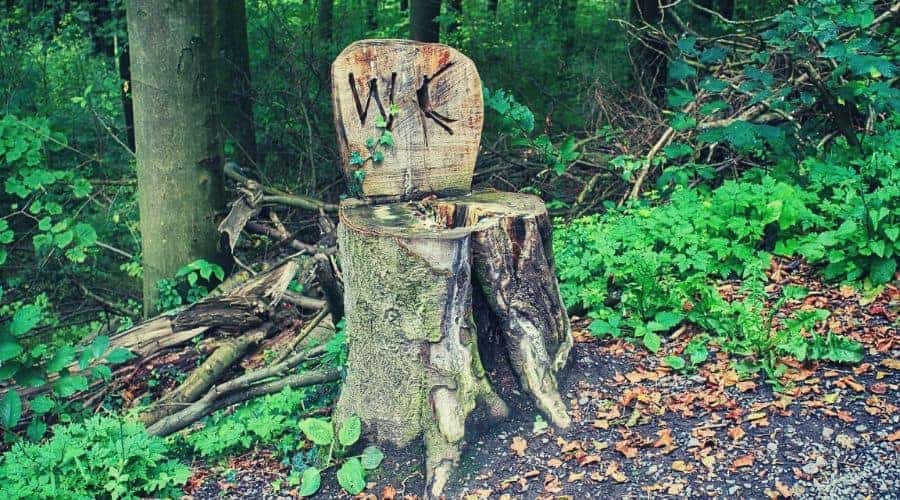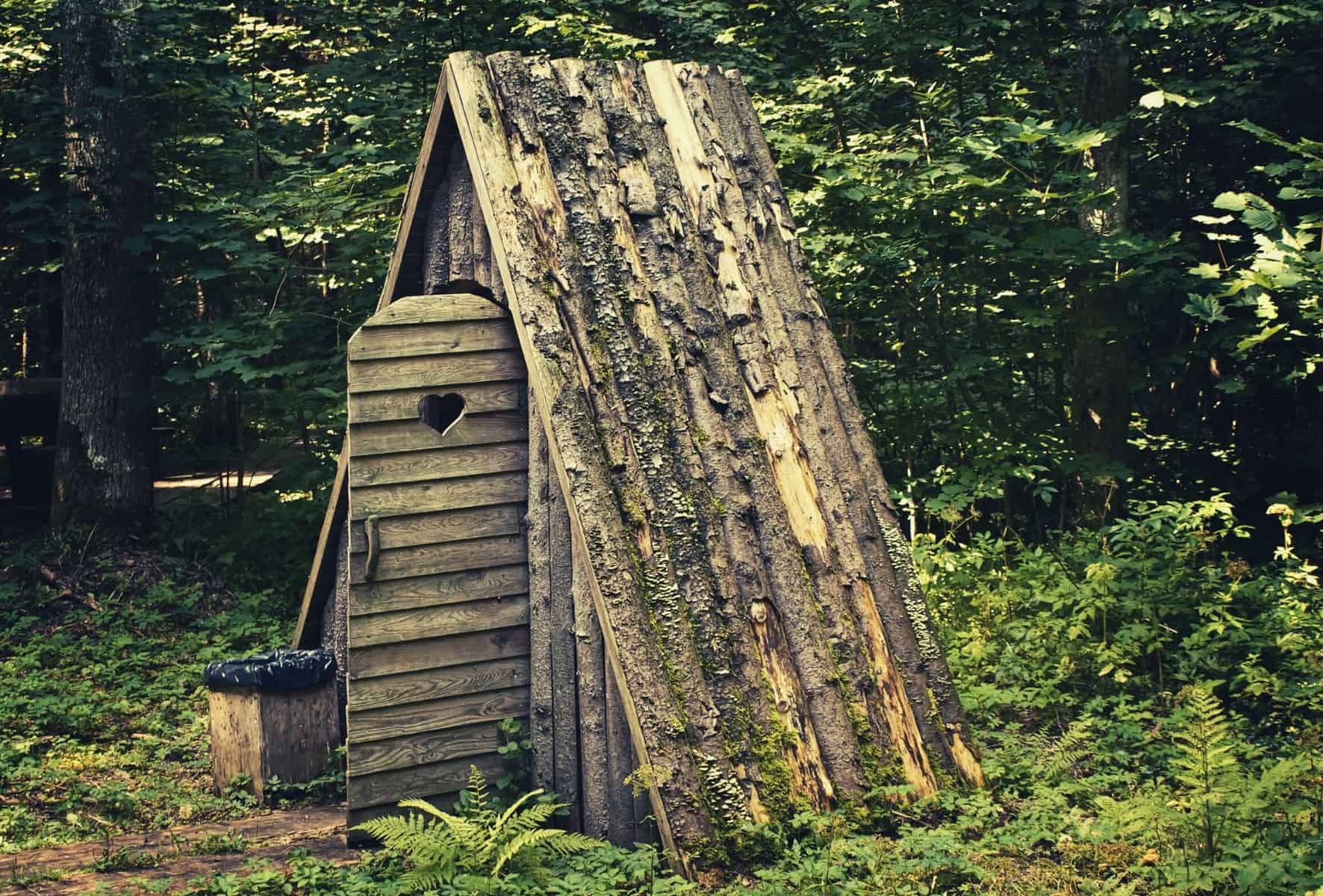Cast aside your worry!
There’s not much to fear with this natural act long considered a right of passage for experienced hikers, backpackers, and outdoor adventurers. Continue reading below, where we’ll teach you how to dig a cathole the right was for safe, efficient, and responsible toilet stops in the backcountry.
Table of Contents
Why Do You Need to Poop in a Hole?
Do you want to be a responsible outdoor traveler or contribute to ruining the experience for others? Finding someone else’s evidence of a trip to the bathroom is never an enjoyable moment while exploring outside. Proper waste disposal is, therefore, necessary to prevent this undesirable discovery by other hikers or animals.
Not only is the practice of burying human waste a common courtesy to others, it helps prevent the spread of harmful bacteria by accidental human and animal contact or water runoff. The organic soils found in many locales, also, aid in decomposition.
It’s such an important practice, in fact, that the Leave No Trace Center for Outdoor Ethics has listed ‘proper disposal of waste’ as one of their popularized seven principles of LNT.
When Is It Necessary?
Public pit toilets, typically maintained by park staff and/or local trail crews, are always the best option for minimizing your bathroom impact as a trail user. They’re not always available, however, and it is during those times where you’ll need proper backcountry, bathroom etiquette to deal with your human waste disposal correctly.
Liquid waste
Numerous studies have shown that urine presents, a practically, negligible impact on local vegetation or soils. Therefore, it is not necessary to dig a cat-hole latrine if you are only needing a quick pee break on the trail. Remember to place yourself a minimum of 200 ft away from fresh bodies of water before marking your territory. Also, consider aiming (time to prove your accuracy!) at bedrock or pine needles to minimize the possible impact of animals digging up salty soil.
Solid waste
Need to poop on the trail? No pit toilet anywhere in sight? Then get ready to put your new cathole digging knowledge to work. This is the standard scenario for when you would need to dig a cathole for taking care of a business in a responsible way.
Selecting a Proper Cathole Site
Ever seen those signs along the highway reminding property owners to ‘Know before you dig’? Well, apply that same ideology when selecting a suitable site for a cathole. Look for a site that meets the following four criteria BEFORE you start digging:
- ≥ 200 ft. away from streams, lakes, ponds
- ≥ 200 ft. away from trails
- ≥ 200 ft. away from camp
- Discreet location, unlikely to be discovered by other hikers

Additional Considerations:
- Rich, organic soils will make your digging much easier
- Soils that receive ample sunlight will decompose the material at a faster rate than those within heavily shaded locations
How to Dig a Cathole Correctly
Once you’ve identified a good site, it’s, almost, time to start digging. Inexperienced hikers, new to using the bathroom outdoors, will often forget to consider their positioning when digging a hole, especially on sloped or uneven terrain. Don’t fall backward in the midst of your ‘business’ because you failed to realize how difficult it would be to hold a squatted position over your, already dug, cathole (unless you want a gross but hilarious story to tell).
We, actually, squat down in position, before digging, to help identify the best spot. Utilizing tree trunks or fallen logs as a support are common ways to make the go a bit more comfortable, particularly on sloping hillsides.

How deep?
Your cathole should be between 6 and 8 inches in depth. Deep enough to be hidden from other humans and animals, yet close enough to the surface to maximize decomposition within rich soils.
How wide?
The hole you dig should be wide enough to hold the entirety of your deposit. 4-6 inches wide is good in most cases.
Leaving No Trace
Once you’ve finished going to the bathroom, it’s time to cover your tracks. Be sure to fill in and cover up the hole with dirt that you, previously, dug out (never let your cathole trowel touch fecal matter for bacteria contamination prevention). Do your best to return the site to its original look by re-scattering any leaves or debris that you may have moved to access the soil. Placing a rock over your cathole, after it has been refilled, is one way you can help minimize future animal encounters.

Toilet paper
The best practice for toilet paper disposal is to pack it out with you. We promise it’s not nearly as bad as it sounds. A Ziploc bag, covered with colored duct tape to disguise the contents, is all that’s needed. Simply place your used toilet paper in the bag for disposal once back in civilization.
Alternatively, you can bury toilet paper with the waste inside the cathole. While not best practice according to LNT, it is, generally, accepted in most areas. Please use minimal toilet paper that is unscented if you plan to leave it in your cathole.
For those wanting to commit to best leave no trace practices without needing to carry out their own toilet paper, consider finding natural varieties in the form of large leaves, smooth rocks, or moss. Cleaning up with a tool provided by mother nature (a large, dead leaf on the ground in front of me) was one of the coolest moments in my backcountry, bathroom career!
Feminine or Other Products
It is never permissible to leave feminine hygiene products or other maintenance items, such as wet wipes, in a cathole. These should be packed out as indicated above. My wife prefers the Ziploc with duct tape technique, described above, for backpacking during that time of the month.
Be Prepared with a Good Camping Poop Kit
We’ve already discussed how important planning is to every successful outdoor trip, and analyzing your poop kit should, always, be a part of that process. What you carry for trips to the bathroom while outdoors will vary based on the environment and land-management restrictions where you will be traveling.
For areas where a cathole is permitted (most common)
- Small, lightweight cathole shovel – metal edges make for easier digging & root breaking
- Toilet paper (plain, white, & unscented) – placed in a plastic bag or specially designed package
- Hand sanitizer or soap for washing hands
- Toilet paper disposal bag – Ziploc w/ duct tape
- Small storage sack for organization – place your disposal bag, cat hole trowel, and other supplies within it for grab-&-go convenience and peace of mind with separation from other gear
For areas where you need to pack out solid human waste (river canyons – less common)
- Waste disposal bags – feature deodorizing gels and puncture-resistant packaging
- Toilet paper
- Hand sanitizer or soap
BONUS TIP: Make it Fun!
Change the stigma associated with your first time using the bathroom outdoors by creating fun ways to classify or rate the experience. I once listened to a seasoned river guide explain how they would encourage guests to ‘rate their poo’ upon returning from using the bathroom.
For example, a 4-star poop (didn’t think you’d ever use that phrase did you?) might include all the LNT principles met, while in a comfortable position, whereas a 5-star rating may include all the above, plus an amazing view. You get the idea. It can be a fun way to acknowledge something that everyone does and encourage responsibility.

